We know it as salt, sodium chloride, sodium, and NaCl. By any name, pepper’s best buddy is not an herb or a spice but an essential mineral and one of our favorite food seasonings.
Salt acts on food molecules to enhance their essence and make them taste and smell better. Without it, favorite recipes like dill pickles and brined turkey wouldn’t be the same!
We need sodium for survival. It’s a vital nutrient that helps maintain blood, nerves, muscles, and fluid levels. However, too much can be detrimental to good health.
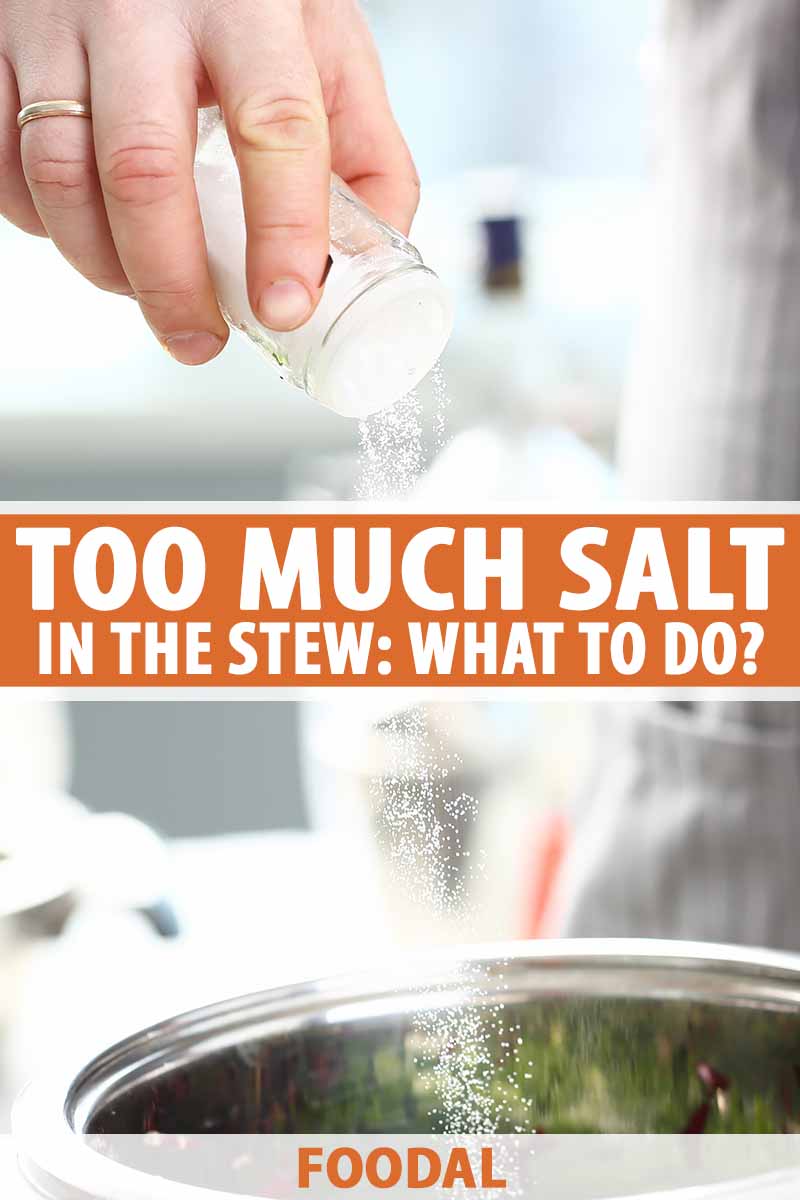
Plenty of foods are naturally rich in sodium, like beets, apples, celery, cranberries, and meats. Most foods contain at least some of this essential mineral.
Regular table salt comes in plain and iodized versions. Iodized salt was introduced to the United States in 1924 to help rid the population of goiter, a thyroid condition common at the time.
Today we cook with many salt varieties, including sea, rock, kosher, and Himalayan. They differ in flavor, price, sodium content, texture, and usage, but each imparts that secret something that makes foods sing – unless we overdo it.
Imagine a rich stew simmering and filling the house with its delicious aroma.
Dip a spoon into the glistening broth and taste. Just a pinch more salt will do the trick. Grab the shaker to add a dash, and – oops! The lid pops off, and with it comes an overly generous pour.
After tossing the shaker into the trash with a few choice words, what should you do after you made this major cooking mistake?
Read on for five quick fixes for moderately oversalted stews, soups, and sauces.
Here’s what we’ll cover:
5 Ways to Fix Oversalted Food
Let’s get this problem solved!
1. Immediately Scoop It Out
The natural reaction to overseasoning stews, soups, and sauces with salt is to get it out – fast!
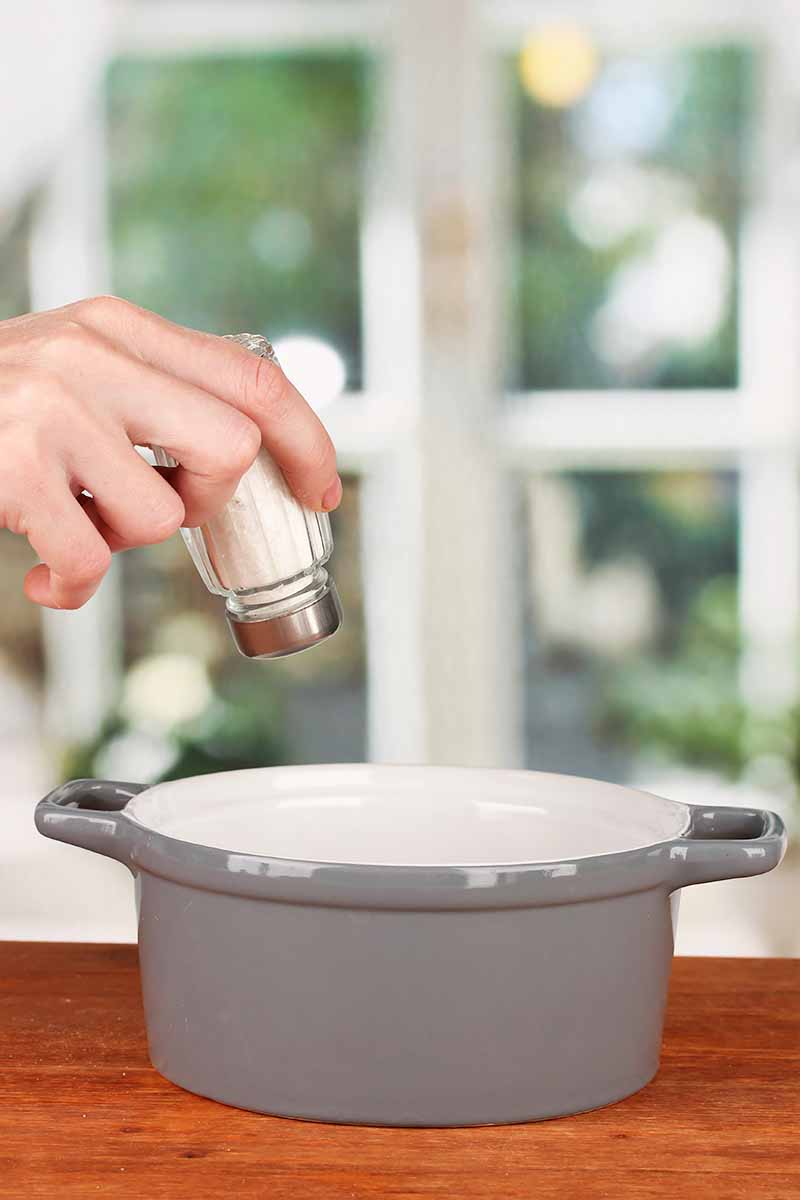
If the salt spilled in a large pile on top of what you are making and hasn’t had a chance to dissolve, you may undo the majority of the damage with this quick fix.
With a large spoon or ladle, gently scoop out the contents in the area where you spilled the salt and dispose of your mistake.
As long as you react as swiftly as possible, you may be able to solve the problem immediately. But if you still have a pot full of food that tastes like the briny beach, the following four methods may help.
2. Dilute and Diffuse
After you’ve attempted to siphon off the salt before it dissolves, your next option is to water down your recipe to diffuse the heavy seasoning to a palatable level. Try the following:
- Water
- Unsalted beef, chicken, or vegetable stock
Adding more liquid dilutes what is already in a dish, rendering the overall flavor less saline.
You’ll need a thickener if the additional fluid over-thins the consistency.
Try dissolving one tablespoon of cornstarch in one to one and a half tablespoons of cold water, and add it slowly to your simmering pot. Repeat until you achieve the desired consistency.
3. Add to Counteract
Another fix is to add an ingredient that will mask your blunder. A sweet, creamy, savory, or acidic addition may improve the taste of your over-seasoned dish.
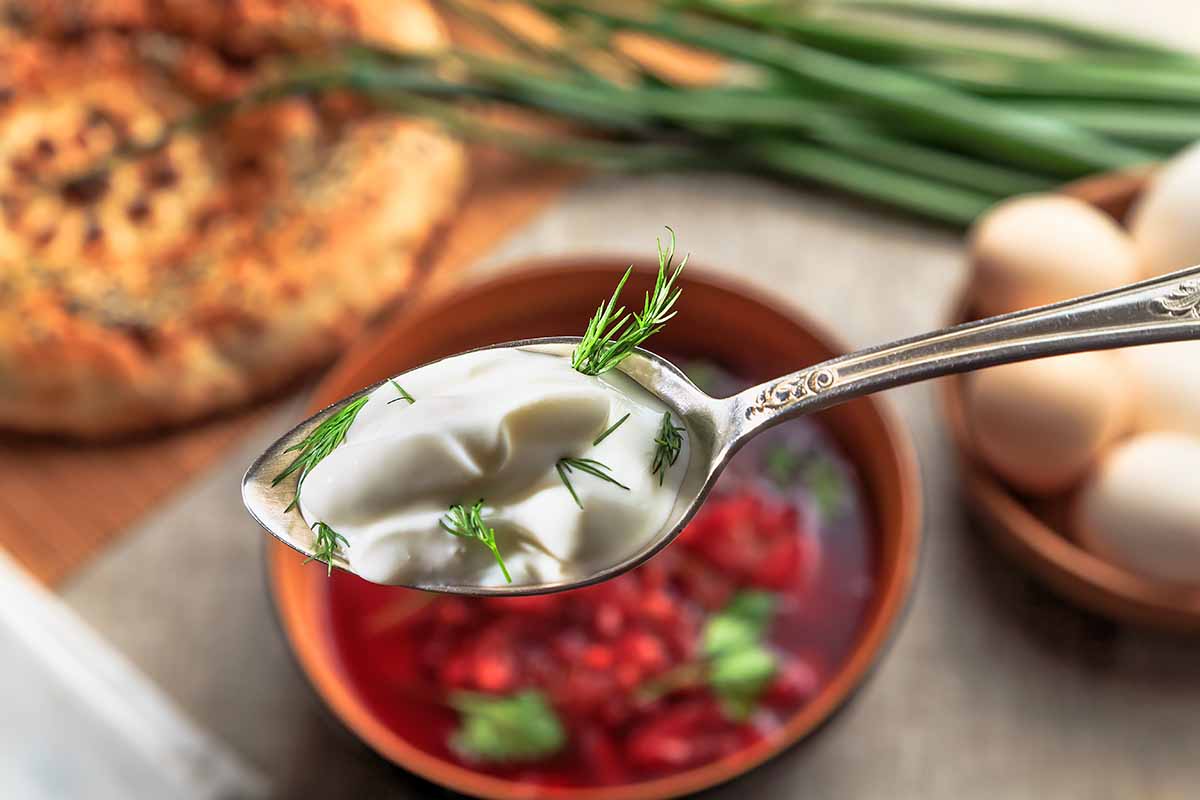
Note: Avoid most bottled fruit and vegetable juices, as they usually contain a noticeable amount of sodium.
Give one of the following a try:
- Citrus juice – a sour variety, like lemon or lime
- Fresh herbs – savory aromatics like basil or rosemary
- Full-fat canned coconut milk – useful for non-dairy recipes
- Milk, half-and-half, or cream
- Sour cream or yogurt
- Sugar – brown or white
- Vinegar – particularly balsamic for beef-based dishes
- Wine – a mildly sweet or off-dry variety
Experiment by adding these in small increments, and tasting as you go until you subdue the briny flavor.
If these fixes don’t do the job, there’s another idea you can try. Read on!
4. Absorb
Back in the day at my house, the conventional wisdom was to grab a potato, peel it, and plunk it into the stew pot when Grandma got heavy-handed with the seasoning.
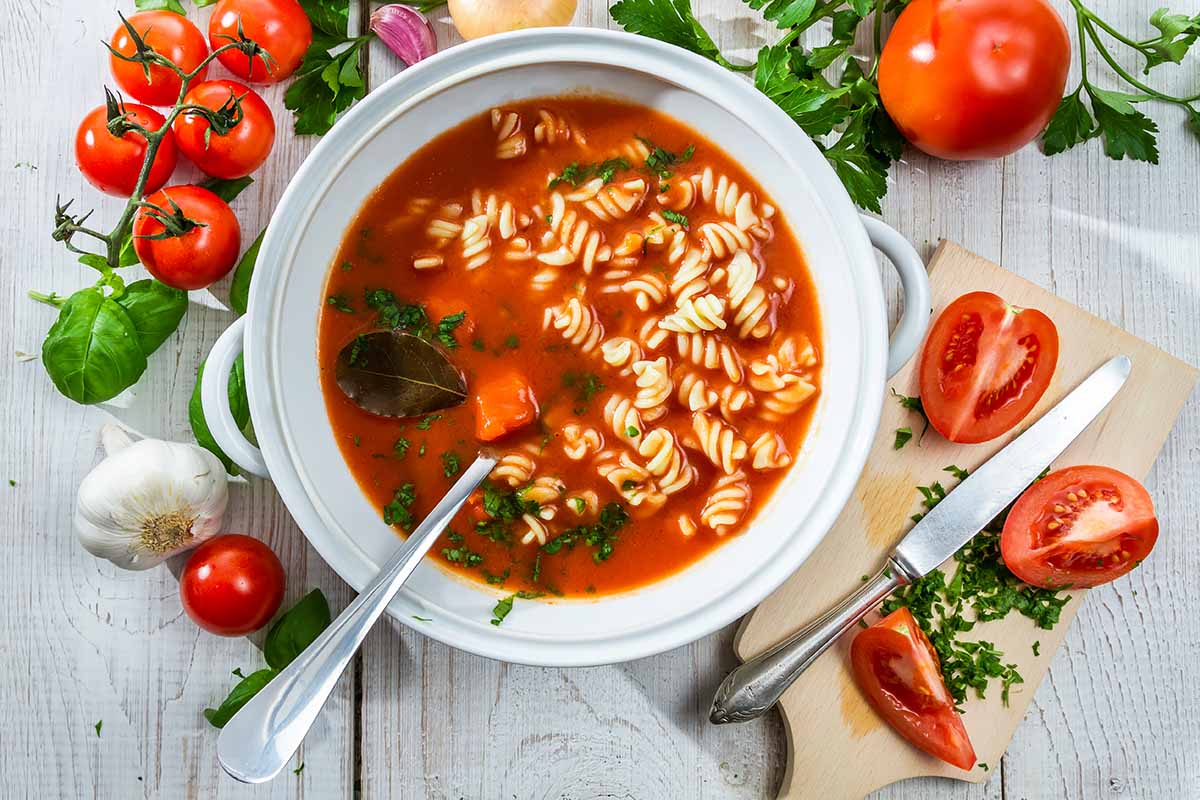
The idea was that it would absorb the excess salt as it simmered in the gravy. We took it out before it got soft enough to fall apart. Of course, Grandma always ate it later – Grandpa was on a low-sodium diet!
An absorbent starch like rice, pasta, or other grains may absorb excess sodium in your soup, stew, or sauce for a less briny taste overall. The added bulk also soaks up liquid, so add broth or water as needed.
If you are rescuing a sauce or broth, you may be able to strain and discard the added starch. It’s more challenging with stews and soups, as the rice or pasta becomes part of the dish.
5. Serve with Something Mild
For a dish that is not utterly ruined by an overabundance of sodium but nevertheless quite salty, try presenting it in a way that minimizes the impact on the palate.
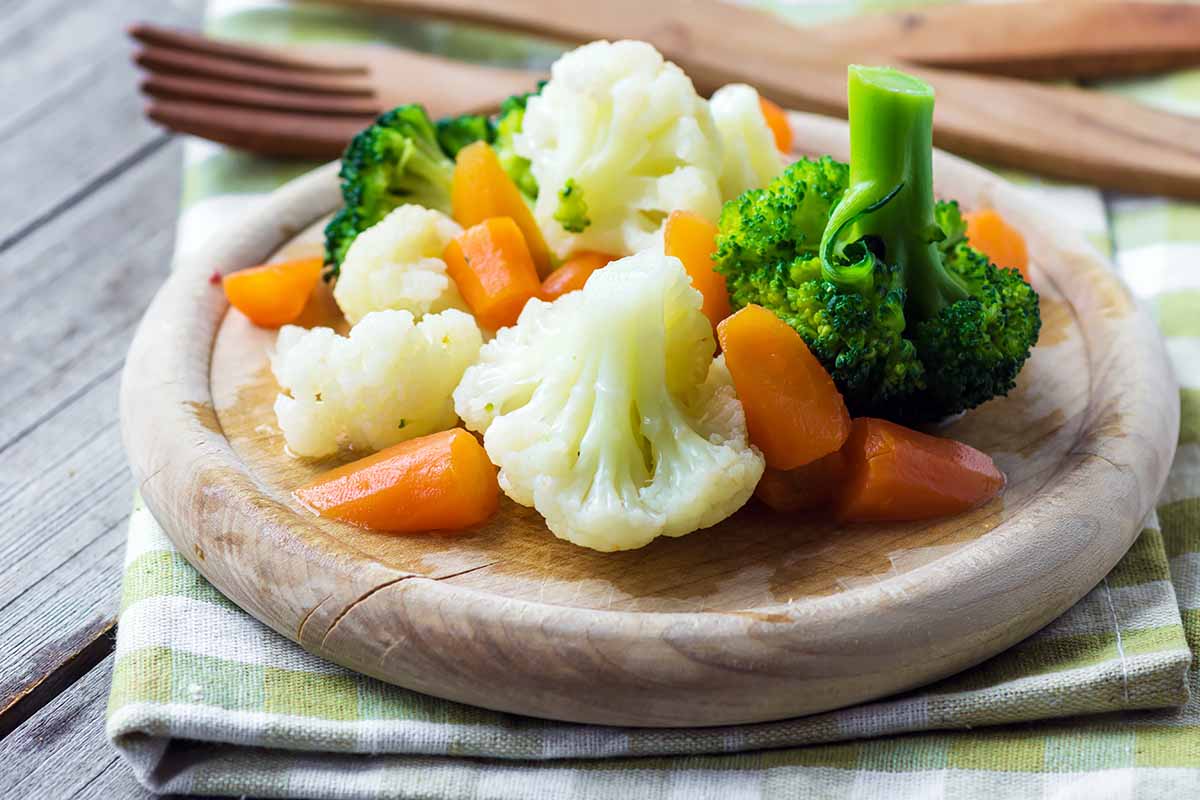
Serve small portions with mild and unseasoned side dishes like baked potatoes, bread, steamed rice, steamed vegetables, or pasta, and avoid offering salted butter or cheese, which tends to be high in sodium.
Dress a cool, crisp salad in a creamy yogurt or sour cream dressing for a healthy side, and keep glasses filled with thirst-quenching beverages and a twist of lemon or lime.
Finish the meal with a refreshing sorbet or ice cream for dessert.
Waste Not, Want Not
Salvaging a dish is a relief, because you don’t have to start over again or throw money down the drain.
Remember these handy tips, and the next time you overdo it with the salt shaker, you’ll have some repair methods to try that may save the day!
What techniques have you tried to salvage an excessively seasoned soup or stew? We enjoy hearing from you! Please share your handy kitchen tips for remedying seasoning mistakes in the comments below.
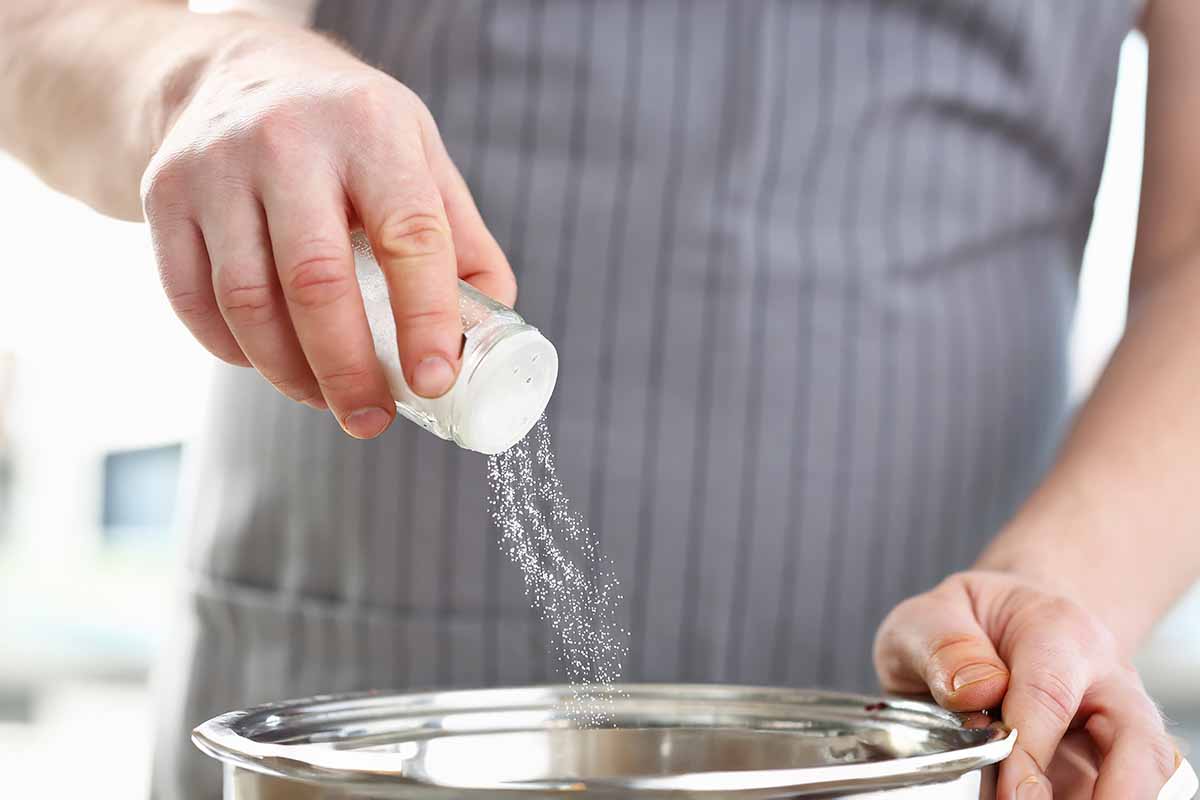
If you found this quick-fix article helpful, we recommend the following from our collection of educational guides that will help you solve common kitchen problems:
- 9 Quick Tips to Say Goodbye to Flat Chocolate Chip Cookies
- Broken Homemade Mayo? Here are Two Quick Fixes for Creamy Perfection!
- The Soggy Muffin Bottom Blues (And How to Fix Them!)
© Ask the Experts, LLC. ALL RIGHTS RESERVED. See our TOS for more details. Uncredited photos via Shutterstock. Originally published September 23rd, 2016. Last updated on November 28, 2023.
About Nan Schiller
Nan Schiller is a writer from southeastern Pennsylvania. When she’s not in the garden, she’s in the kitchen preparing imaginative gluten- and dairy-free meals. With a background in business, writing, editing, and photography, Nan writes humorous and informative articles on gardening, food, parenting, and real estate topics. Having celiac disease has only served to inspire her to continue to explore creative ways to provide her family with nutritious locally-sourced food.




I’ve experienced the dreaded loss of the shaker lid, too. To solve this problem I decided to start seasoning by hand, but occasionally, I might forget and still use the shaker. These tips are real money savers, and I have used a few in the past.
Hello and thanks for writing. You’re absolutely right – seasoning by hand is the way to go. Happy to hear the tips have worked for you.
Yeah, seasoning by hand, or spoon, is the way to go for me too. I’ve overdone it more than once with the shaker or canister. I always water it down if that happens, but yeah, sometimes that just ends in a mess. If possible, I try to double the batch and then just freeze some for later.
These are great ideas for masking the salty taste, but I have to add more to dilute the overall sodium content. I like the ideas of rices or noodles. Then, you almost have to add more liquid.
I’m definitely going to try granny’s secret there too. Why didn’t I think of that?
Well I am so glad I came across this, because I will be honest my go to method is just to add water, and we all know that this really just tends to add a whole other issue with the flavor once you solve the salt issue. I like the alternatives to add, and also focusing on absorbing some of that salt, which is a good way to go. All great ideas, so thank you.
I make this mistake all too often! I’ve used the diluting method before, but that really doesn’t help with a curry, especially after you’ve used your last can of coconut milk. I would never have thought to use citrus juice to remove some of the salty flavor, or vinegar. I didn’t know that sugar or savory herbs would work either. Thanks for posting this! You may have just saved my next dinner!
Thanks for the really great article and the wonderful tips. I know I’m not the only one who has suffered through the experience of putting too much salt, and it’s great to know that it’s not the end of the world if that happens to you. These tips will really come in handy when I’m cooking as I tend to have more accidents with the salt than most. Thanks again.
These are good tips that I would not have thought of implementing on my own. Seems like the added starchy ingredient would pair well with adding the extra liquid, since they can help balance each other out.
Use a triple layer of cheesecloth to form a 12 inch (or more) square. Pour 1 cup to 1 1/4 cups of dry rice in the center of the square. Bring two opposite corners of the cheesecloth together and tie together. Do the same for the remaining two corners of the cheesecloth. You should have a LOOSE cheesecloth “bag”. Take butcher’s twine (or heavy cotton cord) and wrap 2-3 times around the neck of the “bag” below the knots. Tie securely and trim cord. You can now rescue the over salted dish; AND retrieve the rice. *NOTE* The cheesecloth “bag” needs to be loosely filled so the rice has room to expand as it cooks.
That sounds like a great way to fix my thick beef barley soup, so I don’t have to have rice in the soup. Thank you
Good idea, going to put it in my stew NOW!
Omg thank you for posting this article! This saved my first attempt at making a beef pot roast. The addition of balsamic vinegar in the gravy added another dimension in the overall flavor. Thanks again!!
I prepared individual breakfast quiche. Between adding the salt and the chopped ham in the egg mixture it generated too much saltiness. How can I get salt out of cooked quiche?
Adjusting the salt level of a baked dish can be a difficult challenge. Since ham is already salty, that’s going to be a tough one, Joyce. I’d suggest serving your quiche with a dollop of yogurt or sour cream to help even out the salty flavor, but even that may not be enough to help you here. This batch may be a lost cause, unfortunately. I’d recommend noting this on your recipe, and cutting out the added salt if you make it again.
I screwed up and I made cream peas, put too much salt in them. I put potatoes in them to no avail so any suggestions would be very helpful. I need to have them by tonight ☺️
If the potatoes didn’t work Morris, I would suggest adding more plain steamed peas until they are less salty overall, or serving them like more of a condiment than a side dish.
I made ham salad, I did not add any salt but the ham I purchased had too much and it is way too salty. Does anyone have any ideas what I could do
That’s a tough situation, Jean! Ham is a very salty ingredient! I would suggest serving your ham salad on a bed of fresh, undressed salad greens (you could use your favorite, from romaine to spinach). The undressed lettuce would act as a light buffer from the saltiness.
I added too much salt to my eggplants that I browned. How can I get the salt out of it? I am going to prepare it for eggplant parm and going to add sauce and cheese. Do I put sugar in the sauce?
Hi Margery –
You might try adding or increasing the quantities of bland cheeses in the dish, like mozzarella and ricotta, and limiting saltier parmesan.
Also, consider serving small portions as a side instead of a main course, accompanied by a refreshing salad.
And finally, you might try to use your fried eggplant in our recipe for grilled eggplant rollatini with lemony herbed ricotta. The lemon and ricotta, as well as the basil, oregano, and red pepper flakes, may all help to mask the saltiness.
Thank you so much for sharing these tips. Potatoes don’t work for everything. I made a pasta dish that required Creole Seasoning. The one I use has salt included. I didn’t consider that and considered with the additional salt in the recipe. HORROR! I used more heavy cream, milk and water and finally fixed the flavor.
I tried a couple of your tricks-of-the-trade and they work!
Thanks.
I am on a low salt diet. No salt used until the dish is close to finished and after tasting. Use loose salt and use a pinch at a time. Give it time to mix in and taste again. My father was a professional and this was a hard and fast rule. I can still hear ‘How did you know you needed that?’. Watch out for prepared sauces as they are salted. I.e. Worcestershire, soy, flavorings, bouillon. It is hard to remove salt.
thank you! as much as i like salt, i know i cook with too much, your suggestions should help. I just made (too salty) spaghetti sauce so i am going in to try one, or more, of those suggestions. my nephew is coming for dinner & just text me to ask that i take it easy on the salt this time :-).
Just add some water, baking soda, sugar, and a low salt soup to dilute the salty taste.